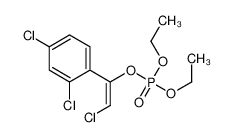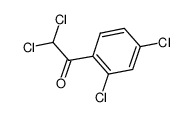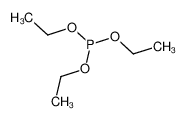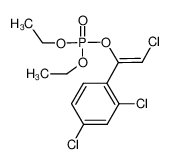1.Identification
1.1 GHS Product identifier
| Product name | chlorfenvinfos |
|---|
1.2 Other means of identification
| Product number | - |
|---|---|
| Other names | (1Ξ)-2-chloro-1-(2,4-dichlorophenyl)ethenyl diethyl phosphate |
1.3 Recommended use of the chemical and restrictions on use
| Identified uses | For industry use only. Organophosphates and carbamates |
|---|---|
| Uses advised against | no data available |
1.4 Supplier's details
| Company | MOLBASE (Shanghai) Biotechnology Co., Ltd. |
|---|---|
| Address | Floor 4 & 5, Building 12, No. 1001 North Qinzhou Road, Xuhui District, Shanghai, China |
| Telephone | +86(21)64956998 |
| Fax | +86(21)54365166 |
1.5 Emergency phone number
| Emergency phone number | +86-400-6021-666 |
|---|---|
| Service hours | Monday to Friday, 9am-5pm (Standard time zone: UTC/GMT +8 hours). |
2.Hazard identification
2.1 Classification of the substance or mixture
Acute toxicity - Oral, Category 2
Acute toxicity - Dermal, Category 3
Hazardous to the aquatic environment, short-term (Acute) - Category Acute 1
Hazardous to the aquatic environment, long-term (Chronic) - Category Chronic 1
2.2 GHS label elements, including precautionary statements
| Pictogram(s) | 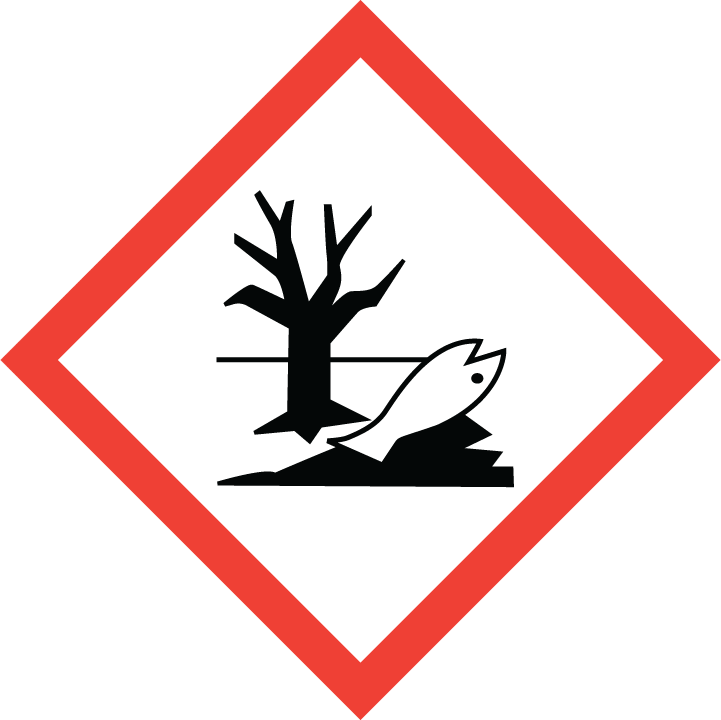  |
|---|---|
| Signal word | Danger |
| Hazard statement(s) | H300 Fatal if swallowed H311 Toxic in contact with skin H410 Very toxic to aquatic life with long lasting effects |
| Precautionary statement(s) | |
| Prevention | P264 Wash ... thoroughly after handling. P270 Do not eat, drink or smoke when using this product. P280 Wear protective gloves/protective clothing/eye protection/face protection. P273 Avoid release to the environment. |
| Response | P301+P310 IF SWALLOWED: Immediately call a POISON CENTER/doctor/… P321 Specific treatment (see ... on this label). P330 Rinse mouth. P302+P352 IF ON SKIN: Wash with plenty of water/... P312 Call a POISON CENTER/doctor/…if you feel unwell. P361+P364 Take off immediately all contaminated clothing and wash it before reuse. P391 Collect spillage. |
| Storage | P405 Store locked up. |
| Disposal | P501 Dispose of contents/container to ... |
2.3 Other hazards which do not result in classification
none
3.Composition/information on ingredients
3.1 Substances
| Chemical name | Common names and synonyms | CAS number | EC number | Concentration |
|---|---|---|---|---|
| chlorfenvinfos | chlorfenvinfos | 470-90-6 | none | 100% |
4.First-aid measures
4.1 Description of necessary first-aid measures
General advice
Consult a physician. Show this safety data sheet to the doctor in attendance.
If inhaled
Fresh air, rest. Artificial respiration may be needed. Refer for medical attention. See Notes.
In case of skin contact
Remove contaminated clothes. Rinse and then wash skin with water and soap. Refer for medical attention .
In case of eye contact
First rinse with plenty of water for several minutes (remove contact lenses if easily possible), then refer for medical attention.
If swallowed
Induce vomiting (ONLY IN CONSCIOUS PERSONS!). Refer for medical attention .
4.2 Most important symptoms/effects, acute and delayed
Acute: cholinesterase inhibitor which affects central nervous system. Severe illness or death possible. Convulsions or coma and death. (EPA, 1998)
4.3 Indication of immediate medical attention and special treatment needed, if necessary
Airway protection. Insure that a clear airway exists. Intubate the patients and aspirate the secretions with a large-bore suction device if necessary. Administer oxygen by mechanically assisted pulmonary ventilation if respiration is depressed. Improve tissue oxygenation as much as possible before administering atropine, so as to minimize the risk of ventricular fibrillation. In severe poisonings, it may be necessary to support pulmonary ventilation mechanically for several days. /Organophosphate pesticides/
5.Fire-fighting measures
5.1 Extinguishing media
Suitable extinguishing media
FIRE EXTINGUISHING MEDIA: Alcohol-resistant foam, dry powder, carbon dioxide.
5.2 Specific hazards arising from the chemical
(Non-Specific -- Organophosphorus Pesticide, Liquid, n.o.s.) This material may burn but does not ignite readily. Container may explode in heat of fire. Fire and runoff from fire control water may produce irritating or poisonous gases. Avoid iron, steel, and brass. Stable when stored in glass or polyethylene lined containers. Avoid alkaline aqueous solutions. (EPA, 1998)
5.3 Special protective actions for fire-fighters
Wear self-contained breathing apparatus for firefighting if necessary.
6.Accidental release measures
6.1 Personal precautions, protective equipment and emergency procedures
Use personal protective equipment. Avoid dust formation. Avoid breathing vapours, mist or gas. Ensure adequate ventilation. Evacuate personnel to safe areas. Avoid breathing dust. For personal protection see section 8.
6.2 Environmental precautions
Personal protection: chemical protection suit including self-contained breathing apparatus. Do NOT let this chemical enter the environment. Collect leaking and spilled liquid in sealable containers as far as possible. Do NOT wash away into sewer. Carefully collect remainder. Then store and dispose of according to local regulations.
6.3 Methods and materials for containment and cleaning up
Pick up and arrange disposal. Sweep up and shovel. Keep in suitable, closed containers for disposal.
7.Handling and storage
7.1 Precautions for safe handling
Avoid contact with skin and eyes. Avoid formation of dust and aerosols. Avoid exposure - obtain special instructions before use.Provide appropriate exhaust ventilation at places where dust is formed. For precautions see section 2.2.
7.2 Conditions for safe storage, including any incompatibilities
Separated from food and feedstuffs. Well closed. Store in glass-lined or polyethylene-lined containers.IT IS STABLE WHEN STORED IN GLASS OR POLYETHYLENE-LINED CONTAINERS...
8.Exposure controls/personal protection
8.1 Control parameters
Occupational Exposure limit values
no data available
Biological limit values
no data available
8.2 Appropriate engineering controls
Handle in accordance with good industrial hygiene and safety practice. Wash hands before breaks and at the end of workday.
8.3 Individual protection measures, such as personal protective equipment (PPE)
Eye/face protection
Safety glasses with side-shields conforming to EN166. Use equipment for eye protection tested and approved under appropriate government standards such as NIOSH (US) or EN 166(EU).
Skin protection
Wear impervious clothing. The type of protective equipment must be selected according to the concentration and amount of the dangerous substance at the specific workplace. Handle with gloves. Gloves must be inspected prior to use. Use proper glove removal technique(without touching glove's outer surface) to avoid skin contact with this product. Dispose of contaminated gloves after use in accordance with applicable laws and good laboratory practices. Wash and dry hands. The selected protective gloves have to satisfy the specifications of EU Directive 89/686/EEC and the standard EN 374 derived from it.
Respiratory protection
Wear dust mask when handling large quantities.
Thermal hazards
no data available
9.Physical and chemical properties
| Physical state | Amber-colored liquid with a mild chemical odor |
|---|---|
| Colour | Colorless liquid |
| Odour | Mild odor |
| Melting point/ freezing point | -23 to -19ºC |
| Boiling point or initial boiling point and boiling range | 396.5ºC at 760 mmHg |
| Flammability | Combustible. Liquid formulations containing organic solvents may be flammable. Gives off irritating or toxic fumes (or gases) in a fire. |
| Lower and upper explosion limit / flammability limit | no data available |
| Flash point | >100°C |
| Auto-ignition temperature | no data available |
| Decomposition temperature | no data available |
| pH | no data available |
| Kinematic viscosity | no data available |
| Solubility | In water:Insoluble |
| Partition coefficient n-octanol/water (log value) | log Kow = 3.81 |
| Vapour pressure | 3.9E-06mmHg at 25°C |
| Density and/or relative density | 1.373g/cm3 |
| Relative vapour density | no data available |
| Particle characteristics | no data available |
10.Stability and reactivity
10.1 Reactivity
no data available
10.2 Chemical stability
SLOWLY HYDROLYZED BY WATER OR ACID, 50% DECOMP OCCURS AT 38 DEG C IN GREATER THAN 700 HR AT PH 1.1, GREATER THAN 400 HR AT PH 9.1, BUT UNSTABLE IN ALKALI--AT 20 DEG C 50% LOSS OCCURS IN 1.28 HR AT PH 13.
10.3 Possibility of hazardous reactions
NonflammableOrganophosphates, such as CHLORFENVINFOS, are susceptible to formation of highly toxic and flammable phosphine gas in the presence of strong reducing agents such as hydrides. Partial oxidation by oxidizing agents may result in the release of toxic phosphorus oxides.
10.4 Conditions to avoid
no data available
10.5 Incompatible materials
... Incompatible with alkaline materials.
10.6 Hazardous decomposition products
When heated to decomposition it emits very toxic fumes of hydrogen chloride and POx /phosphorus oxides/.
11.Toxicological information
Acute toxicity
- Oral: LD50 Mouse oral 117-200 mg/kg
- Inhalation: LC50 Rat inhalation 0.05 mg/l air/4 hr
- Dermal: no data available
Skin corrosion/irritation
no data available
Serious eye damage/irritation
no data available
Respiratory or skin sensitization
no data available
Germ cell mutagenicity
no data available
Carcinogenicity
no data available
Reproductive toxicity
no data available
STOT-single exposure
no data available
STOT-repeated exposure
no data available
Aspiration hazard
no data available
12.Ecological information
12.1 Toxicity
- Toxicity to fish: no data available
- Toxicity to daphnia and other aquatic invertebrates: no data available
- Toxicity to algae: no data available
- Toxicity to microorganisms: no data available
12.2 Persistence and degradability
AEROBIC: The persistence half-lives for chlorofenvinphos ranged from about 14 days to >150 days in soil(1-8). The initial half-live of chlorofenvinphos in soils varied from 2 wks to more than 23 wks depending on the soil type, the formulation, and the dosage level(1). Chlorofenvinphos is more persistent in peat and least persistent in sandy loam and brick earth; the initial half-life in peat was >16 wks, >12 wks in loam, and >2 wks in sandy loam and brick earth(1). In another study, chlorofenvinphos degraded slowly on peaty soil whereas on sandy soils persistence was much shorter(2). When applied to the surface, the half-life on peat soil was >150 days(2). On sandy loam soil, it was somewhat <30 days(2). On fine sandy soil, half-life dropped to <4 days(2). When granular formulations were applied to sandy loam soil, chlorofenvinphos half-life was 10-12 wk(2). Depth of incorporation of chlorofenvinphos did not affect the residue rate of decline in soil; and about 73% of a granular application, incorporated to a depth of 15 cm, dissipated within 23 wk(2). Trace residues were detected in the soil as long as 4 yr post application(2). In one test using sterilized soil and sand, 95% of initial chlorofenvinphos remained after 45 days of incubation, while in nonsterile soil, 70-98% was degraded suggesting a biological route of disappearance(3). In laboratory studies, the disappearance rate of chlorofenvinphos was more than 15 times faster in nonsterile soil as compared to sterilized soil(4). Using a sandy loam soil and an organic soil, more than 24 weeks of incubation were required to reach 50% degradation of chlorofenvinphos when the soils were sterilized(5); in nonsterilized soils, only one week of incubation or less was needed to reach 50% degradation(5).
12.3 Bioaccumulative potential
An estimated BCF of 28 was calculated for chlorofenvinphos(SRC), using a log Kow of 3.81(1) and a regression-derived equation(2). According to a classification scheme(3), this BCF suggests the potential for bioconcentration in aquatic organisms is low(SRC). A BCF of 255 has been reported for Mediterranean mussels (Mytilus galloprovincialis)(4). A BCF of 200 has been reported for earthworms(5,6).
12.4 Mobility in soil
A Koc of 295 for chlorofenvinphos was measured in silt loam soil containing 3.53% organic matter(1). According to a suggested classification scheme(2), this Koc value suggests that chlorofenvinphos has medium mobility in soil(SRC). Experimental Kd sorption coefficients of 10.6 to 256.0 have been determined for various kaolinite and bentonite clays(3) indicating that strong adsorption to clay particles is possible(SRC). Over a 90 day observation period during a field study in a sandy loam soil (organic carbon content of 0.32%), surface applied chlorofenvinphos did not leach below a 15 cm depth(4); in addition, no lateral soil movement was observed(4), which suggests that chlorofenvinphos has limited mobility in soil(SRC).
12.5 Other adverse effects
no data available
13.Disposal considerations
13.1 Disposal methods
Product
The material can be disposed of by removal to a licensed chemical destruction plant or by controlled incineration with flue gas scrubbing. Do not contaminate water, foodstuffs, feed or seed by storage or disposal. Do not discharge to sewer systems.
Contaminated packaging
Containers can be triply rinsed (or equivalent) and offered for recycling or reconditioning. Alternatively, the packaging can be punctured to make it unusable for other purposes and then be disposed of in a sanitary landfill. Controlled incineration with flue gas scrubbing is possible for combustible packaging materials.
14.Transport information
14.1 UN Number
| ADR/RID: UN2810 | IMDG: UN2810 | IATA: UN2810 |
14.2 UN Proper Shipping Name
| ADR/RID: TOXIC LIQUID, ORGANIC, N.O.S. |
| IMDG: TOXIC LIQUID, ORGANIC, N.O.S. |
| IATA: TOXIC LIQUID, ORGANIC, N.O.S. |
14.3 Transport hazard class(es)
| ADR/RID: 6.1(a) | IMDG: 6.1(a) | IATA: 6.1(a) |
14.4 Packing group, if applicable
| ADR/RID: II | IMDG: II | IATA: II |
14.5 Environmental hazards
| ADR/RID: yes | IMDG: yes | IATA: yes |
14.6 Special precautions for user
no data available
14.7 Transport in bulk according to Annex II of MARPOL 73/78 and the IBC Code
no data available
15.Regulatory information
15.1 Safety, health and environmental regulations specific for the product in question
| Chemical name | Common names and synonyms | CAS number | EC number |
|---|---|---|---|
| chlorfenvinfos | chlorfenvinfos | 470-90-6 | none |
| European Inventory of Existing Commercial Chemical Substances (EINECS) | Listed. | ||
| EC Inventory | Listed. | ||
| United States Toxic Substances Control Act (TSCA) Inventory | Not Listed. | ||
| China Catalog of Hazardous chemicals 2015 | Listed. | ||
| New Zealand Inventory of Chemicals (NZIoC) | Listed. | ||
| Philippines Inventory of Chemicals and Chemical Substances (PICCS) | Not Listed. | ||
| Vietnam National Chemical Inventory | Not Listed. | ||
| Chinese Chemical Inventory of Existing Chemical Substances (China IECSC) | Not Listed. | ||
16.Other information
Information on revision
| Creation Date | Aug 13, 2017 |
|---|---|
| Revision Date | Aug 13, 2017 |
Abbreviations and acronyms
- CAS: Chemical Abstracts Service
- ADR: European Agreement concerning the International Carriage of Dangerous Goods by Road
- RID: Regulation concerning the International Carriage of Dangerous Goods by Rail
- IMDG: International Maritime Dangerous Goods
- IATA: International Air Transportation Association
- TWA: Time Weighted Average
- STEL: Short term exposure limit
- LC50: Lethal Concentration 50%
- LD50: Lethal Dose 50%
- EC50: Effective Concentration 50%
References
- IPCS - The International Chemical Safety Cards (ICSC), website: http://www.ilo.org/dyn/icsc/showcard.home
- HSDB - Hazardous Substances Data Bank, website: https://toxnet.nlm.nih.gov/newtoxnet/hsdb.htm
- IARC - International Agency for Research on Cancer, website: http://www.iarc.fr/
- eChemPortal - The Global Portal to Information on Chemical Substances by OECD, website: http://www.echemportal.org/echemportal/index?pageID=0&request_locale=en
- CAMEO Chemicals, website: http://cameochemicals.noaa.gov/search/simple
- ChemIDplus, website: http://chem.sis.nlm.nih.gov/chemidplus/chemidlite.jsp
- ERG - Emergency Response Guidebook by U.S. Department of Transportation, website: http://www.phmsa.dot.gov/hazmat/library/erg
- Germany GESTIS-database on hazard substance, website: http://www.dguv.de/ifa/gestis/gestis-stoffdatenbank/index-2.jsp
- ECHA - European Chemicals Agency, website: https://echa.europa.eu/

